Books and selected articles
The Survey has been involved in Australian toponymy for many years, and some of the results of its research appear in books and journal articles written by ANPS personnel and their colleagues.
Placenames Australia maintains and presents a catalogue of this material.
To view these resources,
see here for books,
and here for a select list of journal articles on Australian toponymy.
Placenames Australia maintains and presents a catalogue of this material.
To view these resources,
see here for books,
and here for a select list of journal articles on Australian toponymy.
Technical Papers
The ANPS Series of Technical Papers presents the background research undertaken by members of the Survey. The papers arise from work on the standardised data model of ANPS, and represent much of the decision-making involved in establishing the principles and processes of the Survey.
The Papers are available for downloading here from Placenames Australia.
The Papers are available for downloading here from Placenames Australia.
Placenames Reports
General Editor: David Blair
This Series presents the results of toponymic work by researchers of the Survey. All the Reports in this Series are based on the principles of ANPS research:
This Series presents the results of toponymic work by researchers of the Survey. All the Reports in this Series are based on the principles of ANPS research:
- documentation for each placename is recorded,
- an interpretation of the placename's origin and history is formed,
- and the 'story' of the placenames is presented in an accessible form.
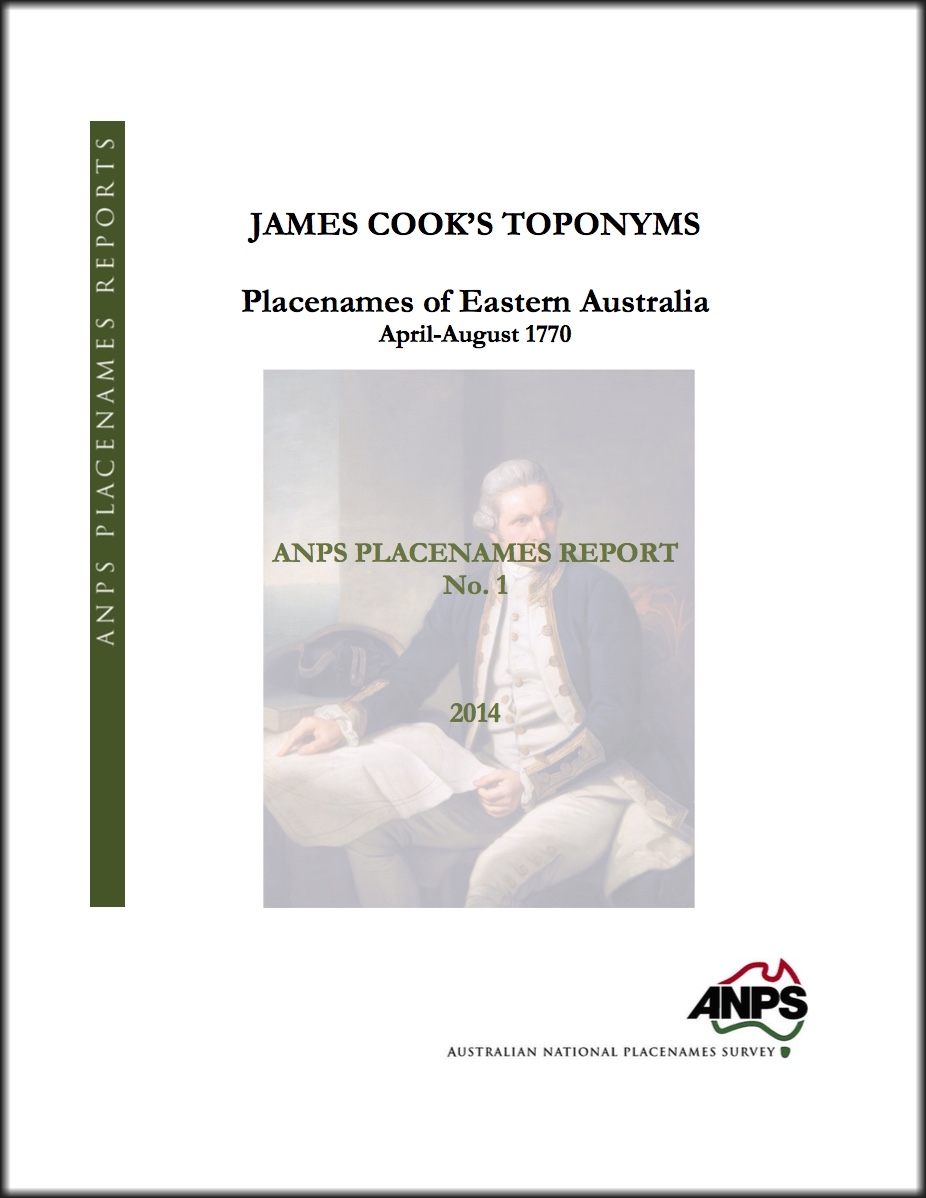 | ANPS Placenames Report No 1: James Cook's toponyms: Placenames of eastern Australia, April-August 1770 (2014; 2017), by David Blair |
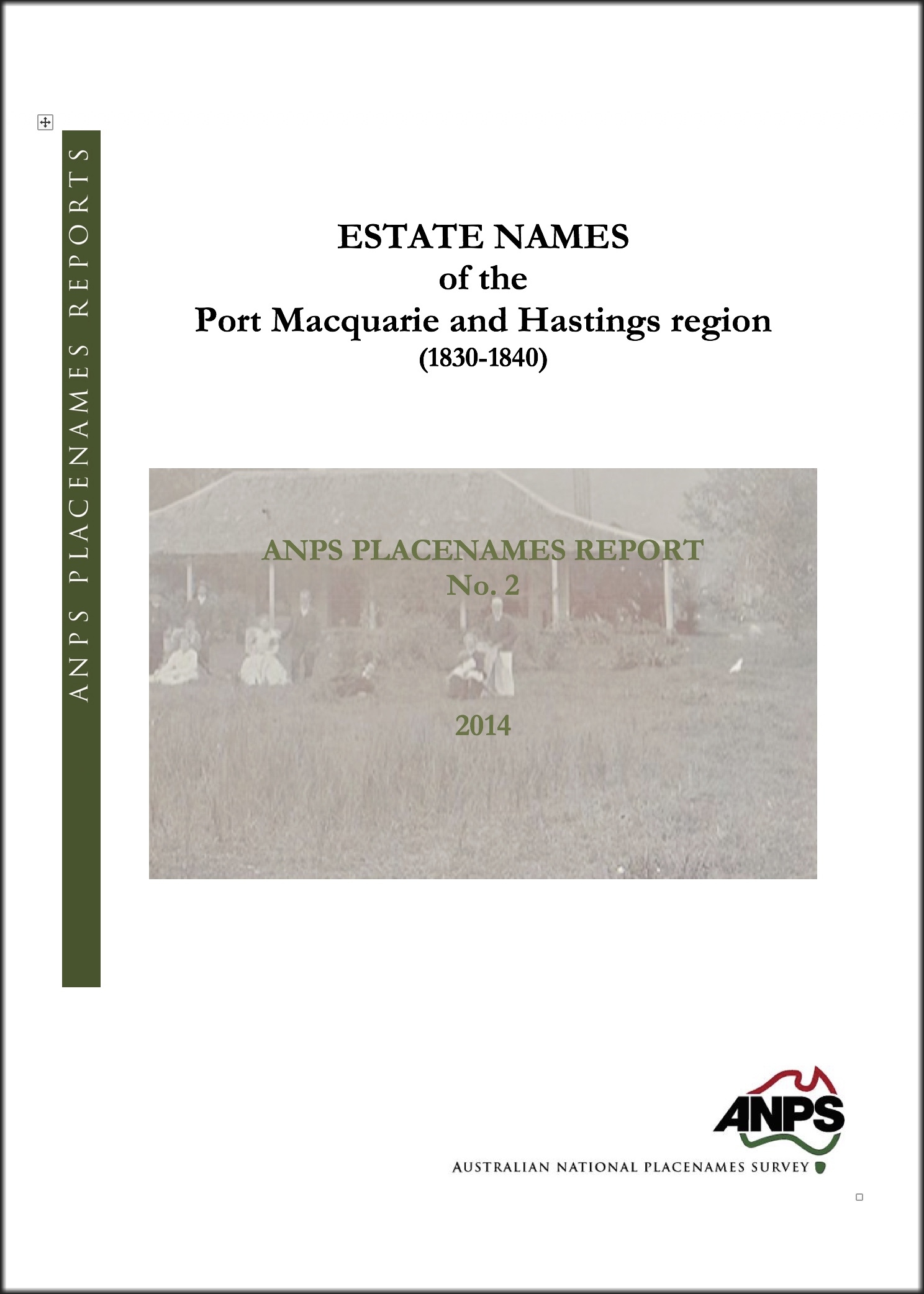 | ANPS Placenames Report No 2: Estate names of the Port Macquarie & Hastings region, 1830-1840 (2014), by Tony Dawson |
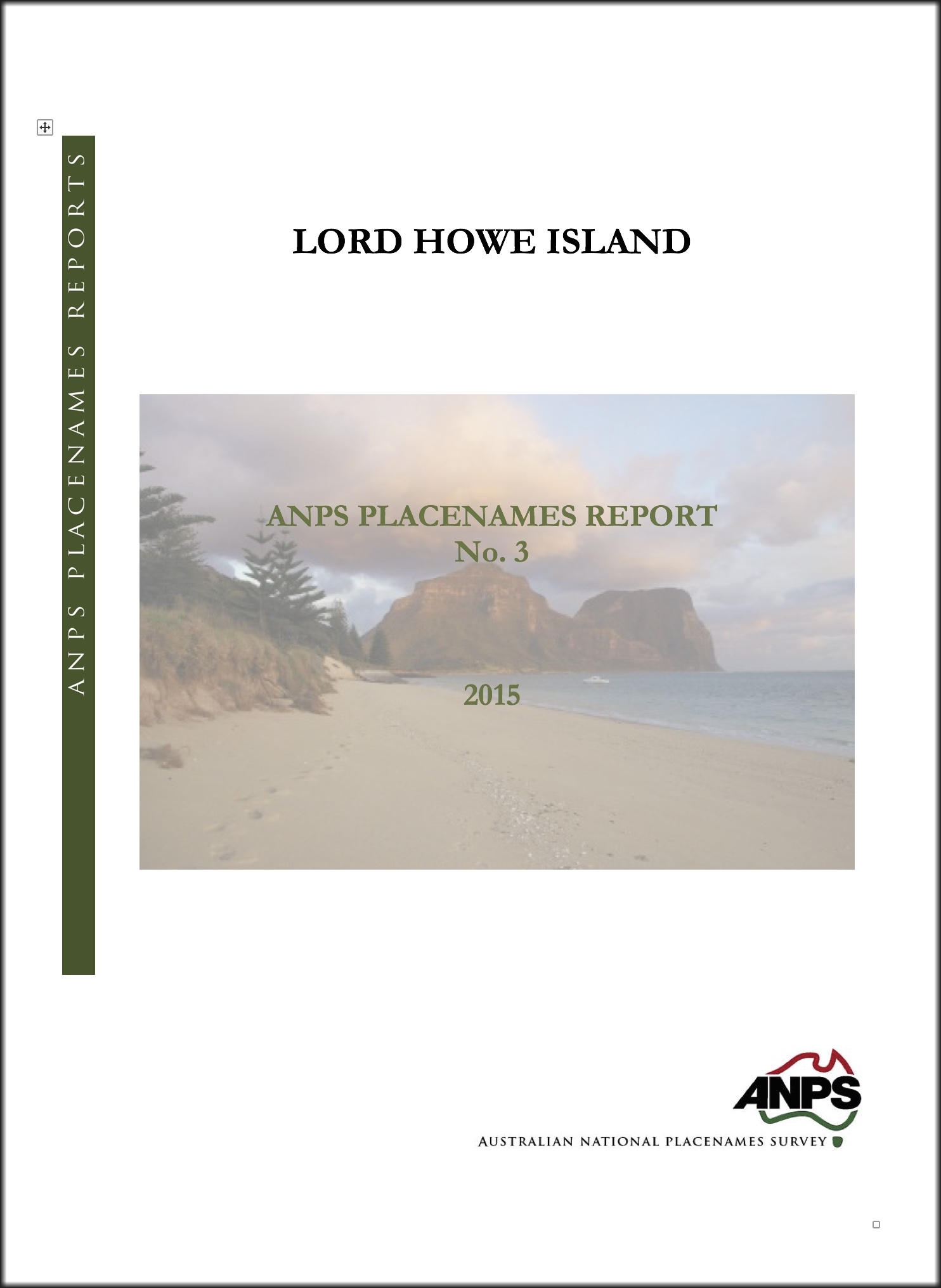 | ANPS Placenames Report No 3: Lord Howe Island (2015), by David Blair |
Data Reports
General Editor: David Blair
The Survey releases, from time to time, records of toponymic data which have been prepared by our researchers. Although the data may not be in the final form which ANPS requires of its Placenames Reports, it may still be found useful and interesting by those whose interests extend to the placenames of the particular locality.
The Survey releases, from time to time, records of toponymic data which have been prepared by our researchers. Although the data may not be in the final form which ANPS requires of its Placenames Reports, it may still be found useful and interesting by those whose interests extend to the placenames of the particular locality.
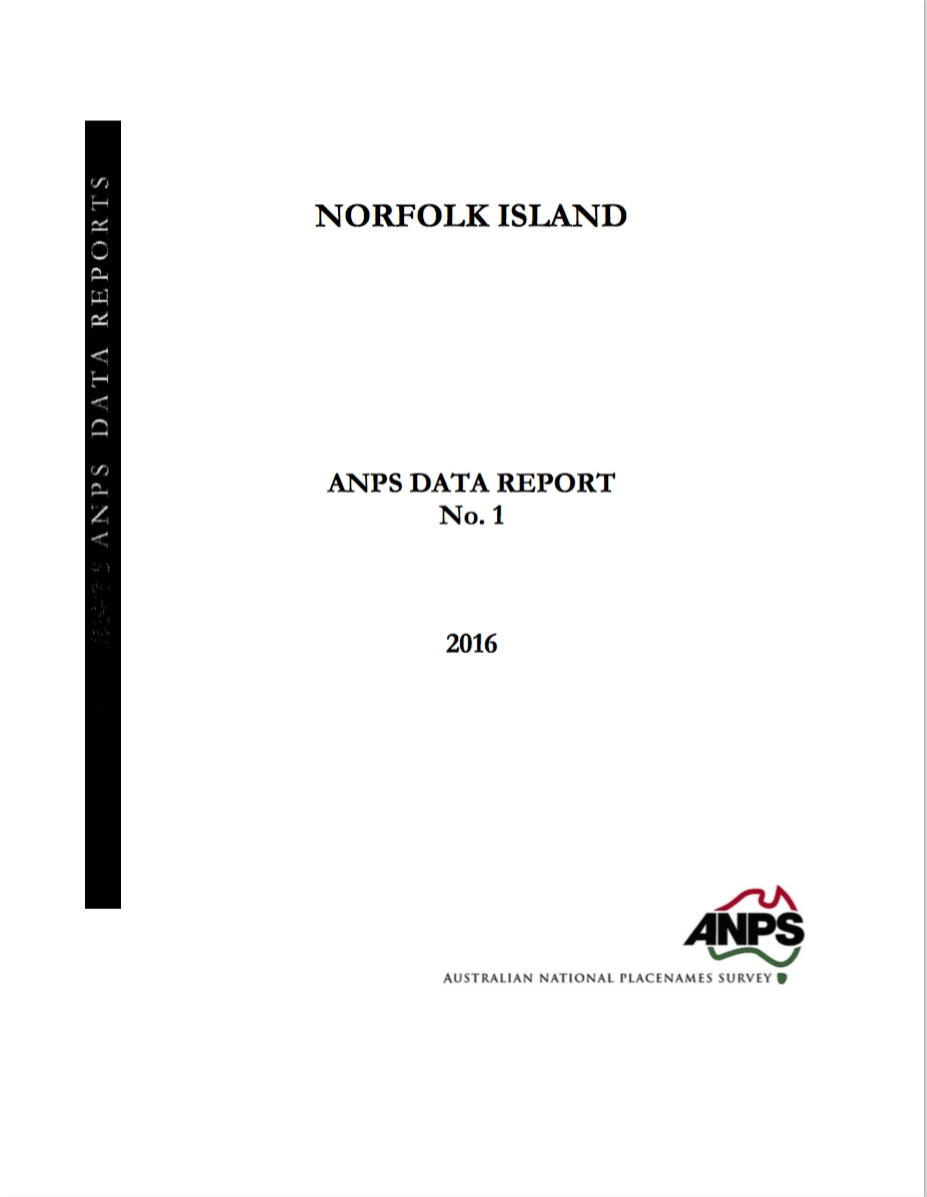 | ANPS Data Report No 1: Norfolk Island [2016], by Joshua Nash |
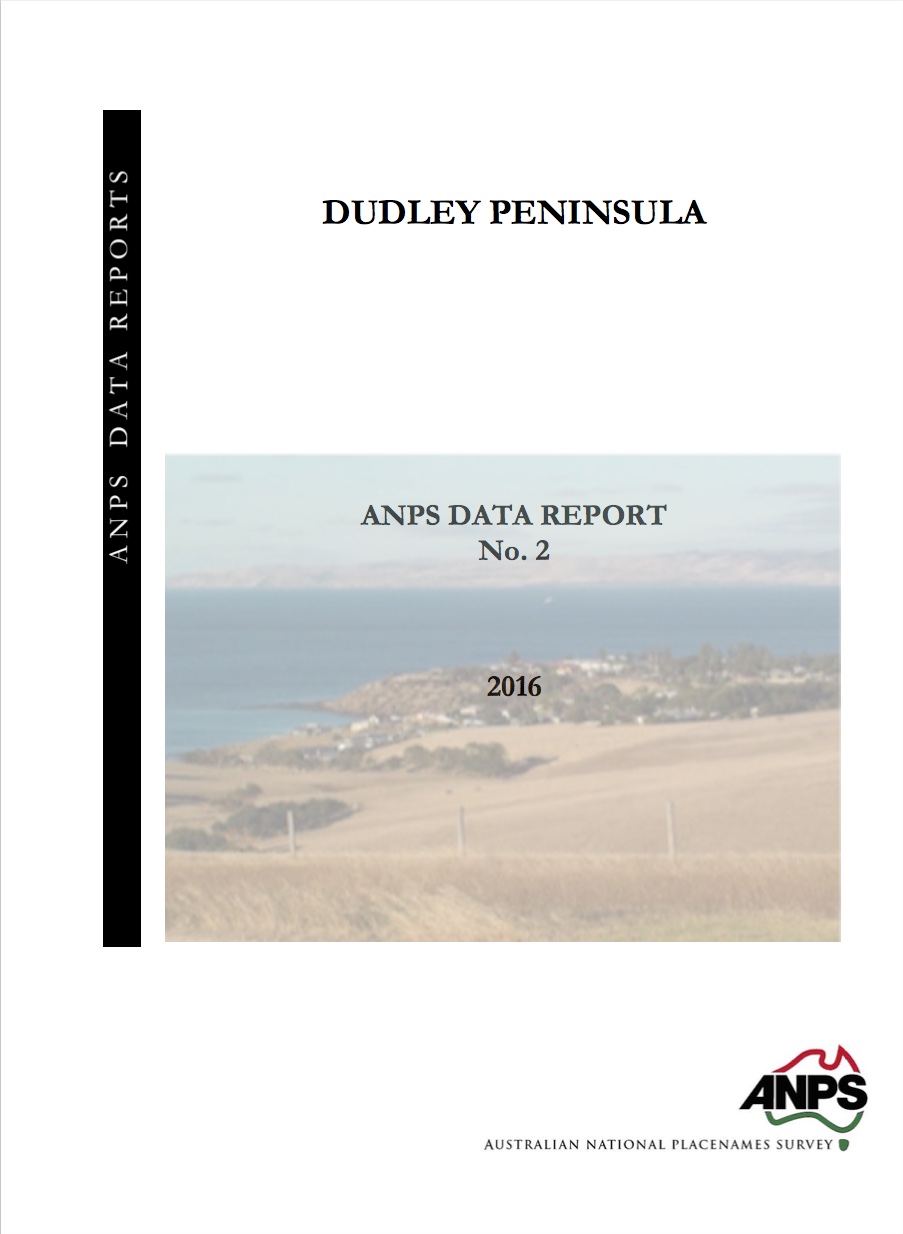 | ANPS Data Report No 2: Dudley Peninsula [2016], by Joshua Nash |
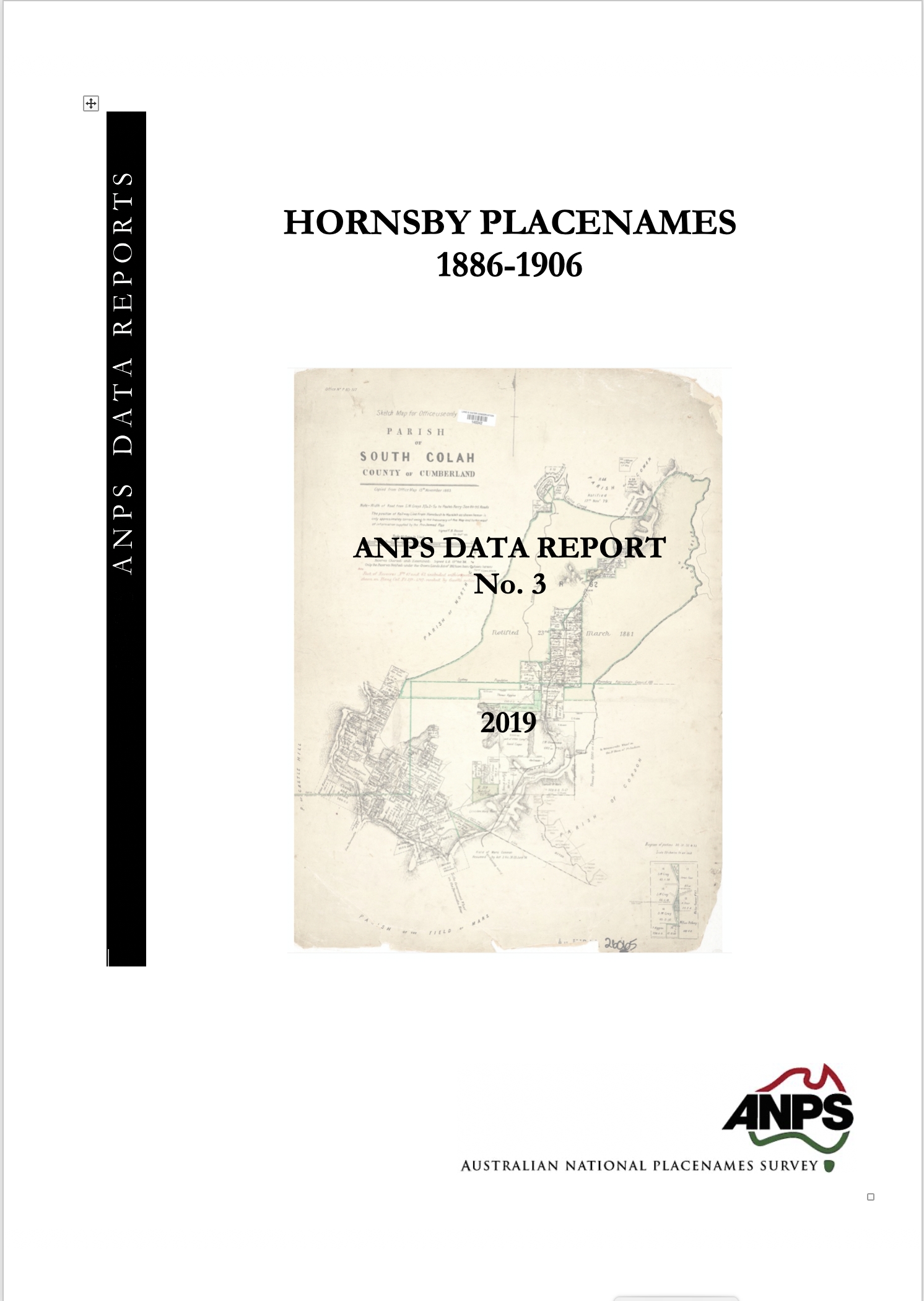 | ANPS Data Report No 3: Hornsby Shire 1886-1906 [2019], by Hornsby Shire Historical Society |
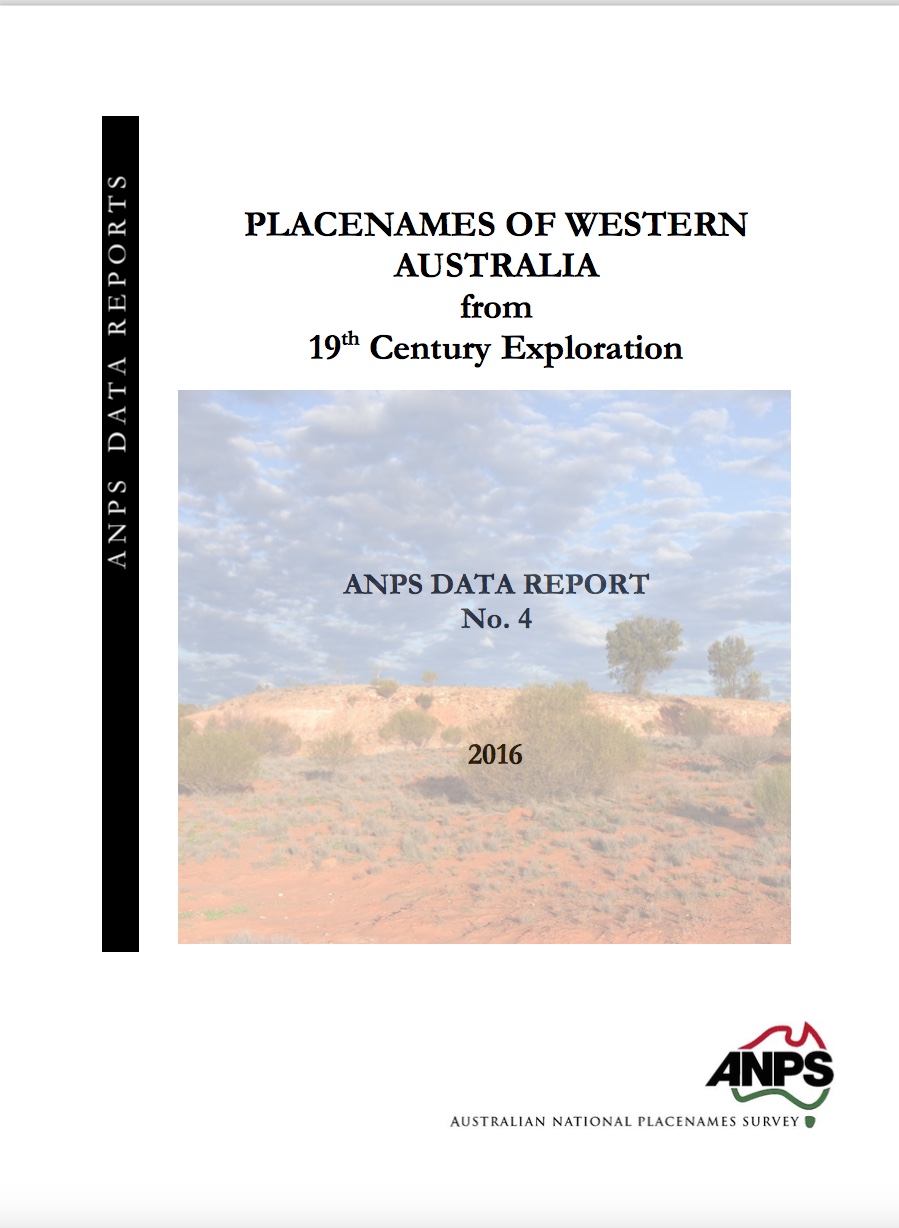 | ANPS Data Report No 4: Placenames of Western Australia from 19th Century Exploration [2016], by Lesley Brooker |
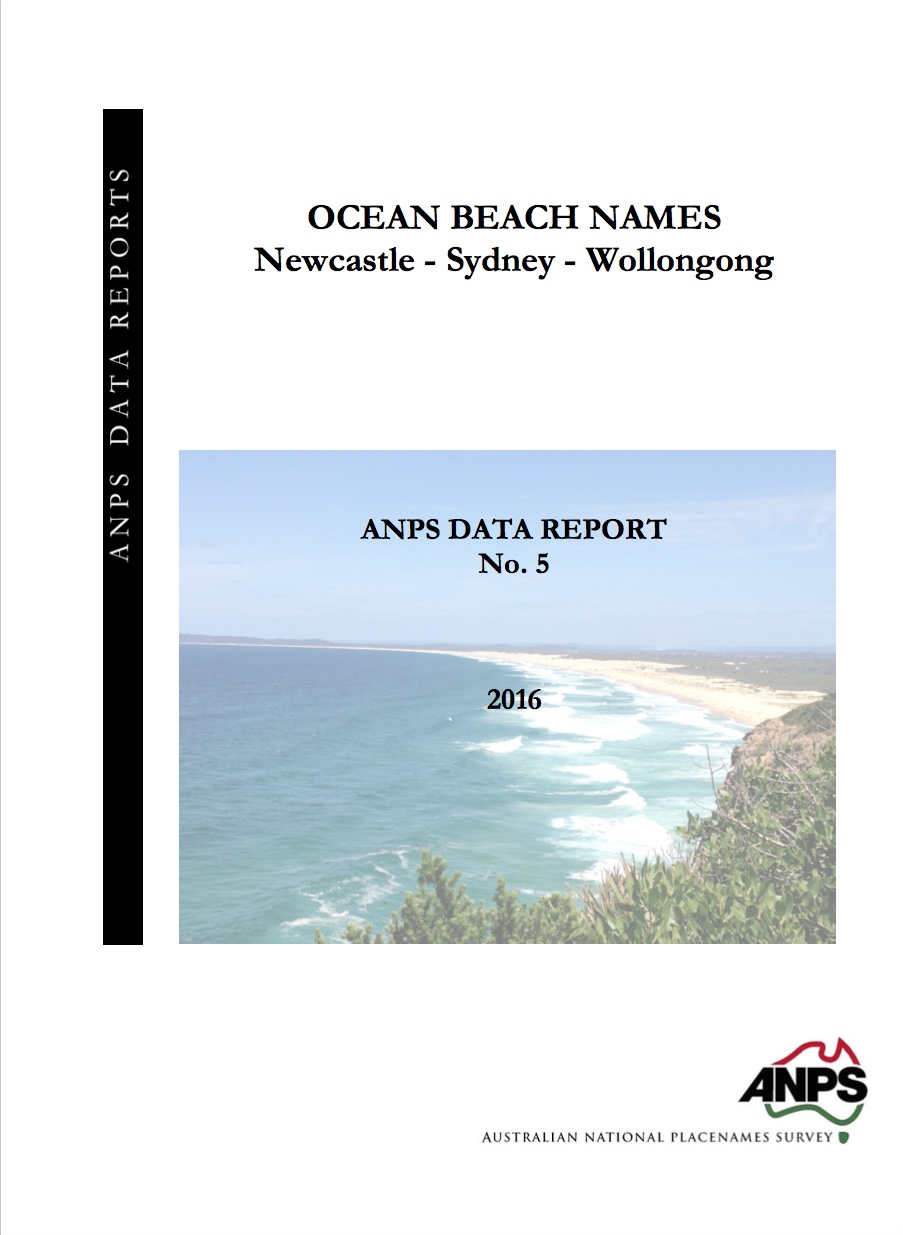 | ANPS Data Report No 5: Ocean Beach Names: Newcastle-Sydney-Wollongong [2016], by David Blair |
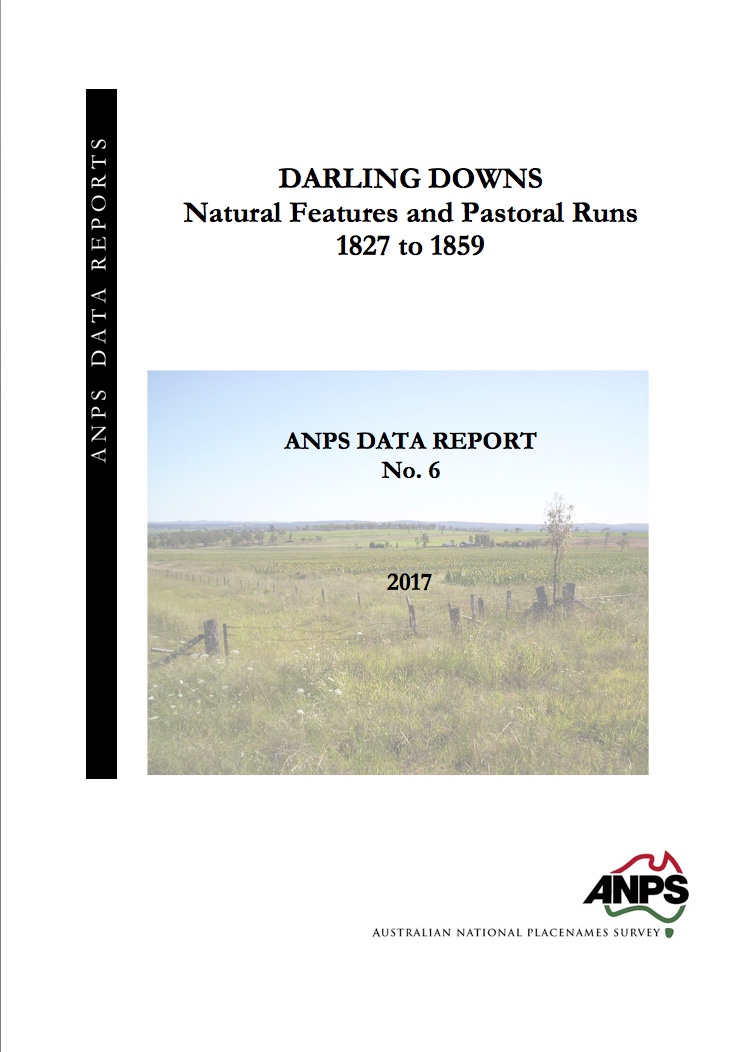 | ANPS Data Report No 6: Darling Downs: Natural Features and Pastoral Runs 1827-1859 [2002/2017], by Dale Lehner |
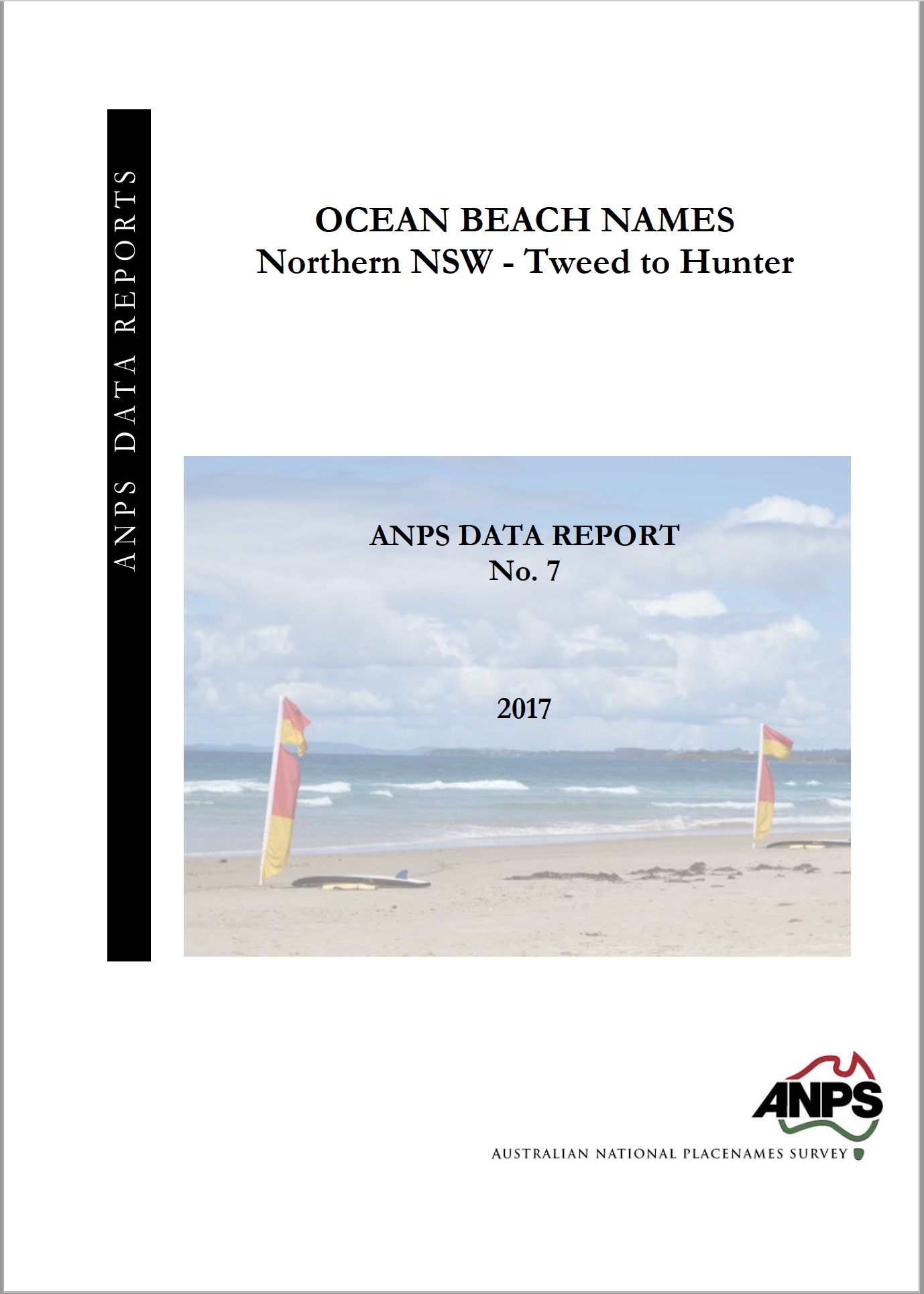 | ANPS Data Report No 7: Ocean Beach Names: Northern NSW - Tweed to Hunter [2017], by David Blair |
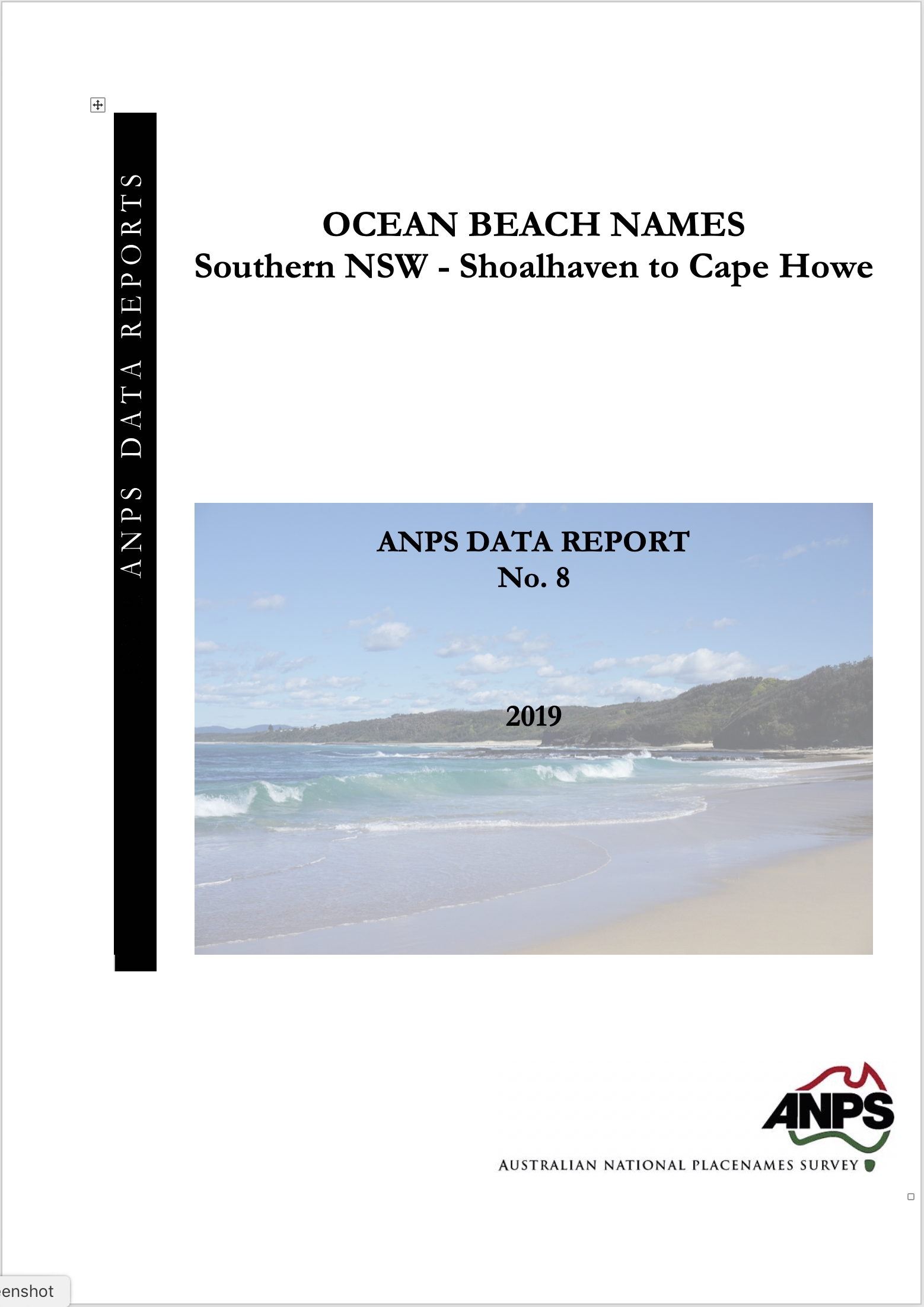 | ANPS Data Report No 8: Ocean Beach Names: Southern NSW - Shoalhaven to Cape Howe [2019], by David Blair |
Occasional Papers
General Editor: David Blair
This Series presents papers of toponymic interest written by researchers associated with the Survey. The papers are too substantial to find their place within the pages of the newsletter Placenames Australia, but are of general interest and may indeed have been written as a response to issues raised in that publication.
In preparation:
- 18. Australia's micronation names


This Series presents papers of toponymic interest written by researchers associated with the Survey. The papers are too substantial to find their place within the pages of the newsletter Placenames Australia, but are of general interest and may indeed have been written as a response to issues raised in that publication.
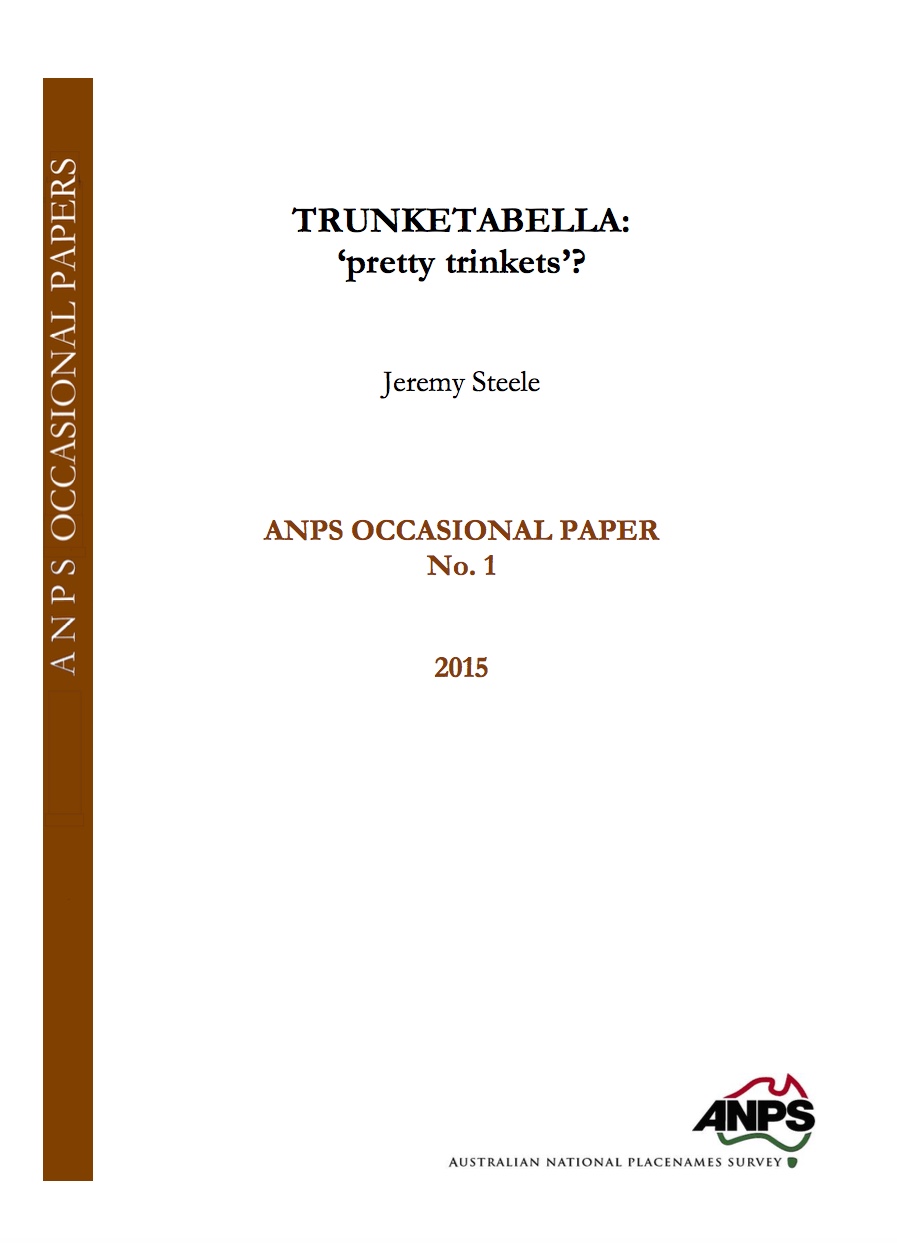 | ANPS Occasional Paper No 1: Trunketabella: 'pretty trinkets'? (December 2015), by Jeremy Steele |
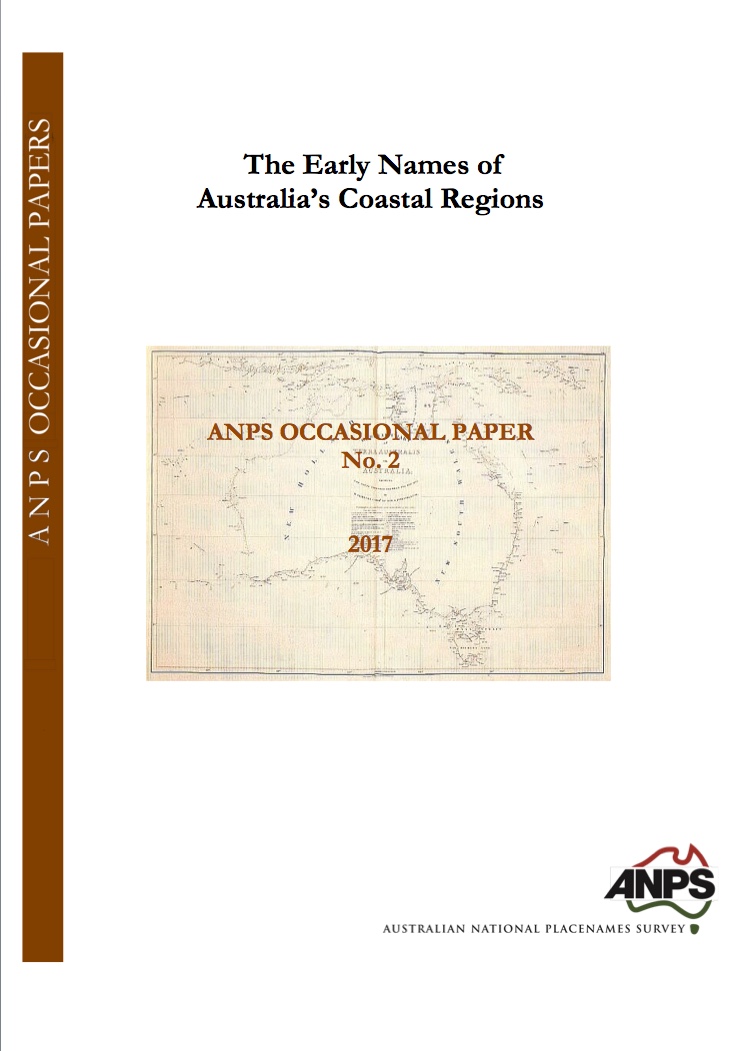 | ANPS Occasional Paper No 2: The early names of Australia's coastal regions (May 2017), by Jan Tent |
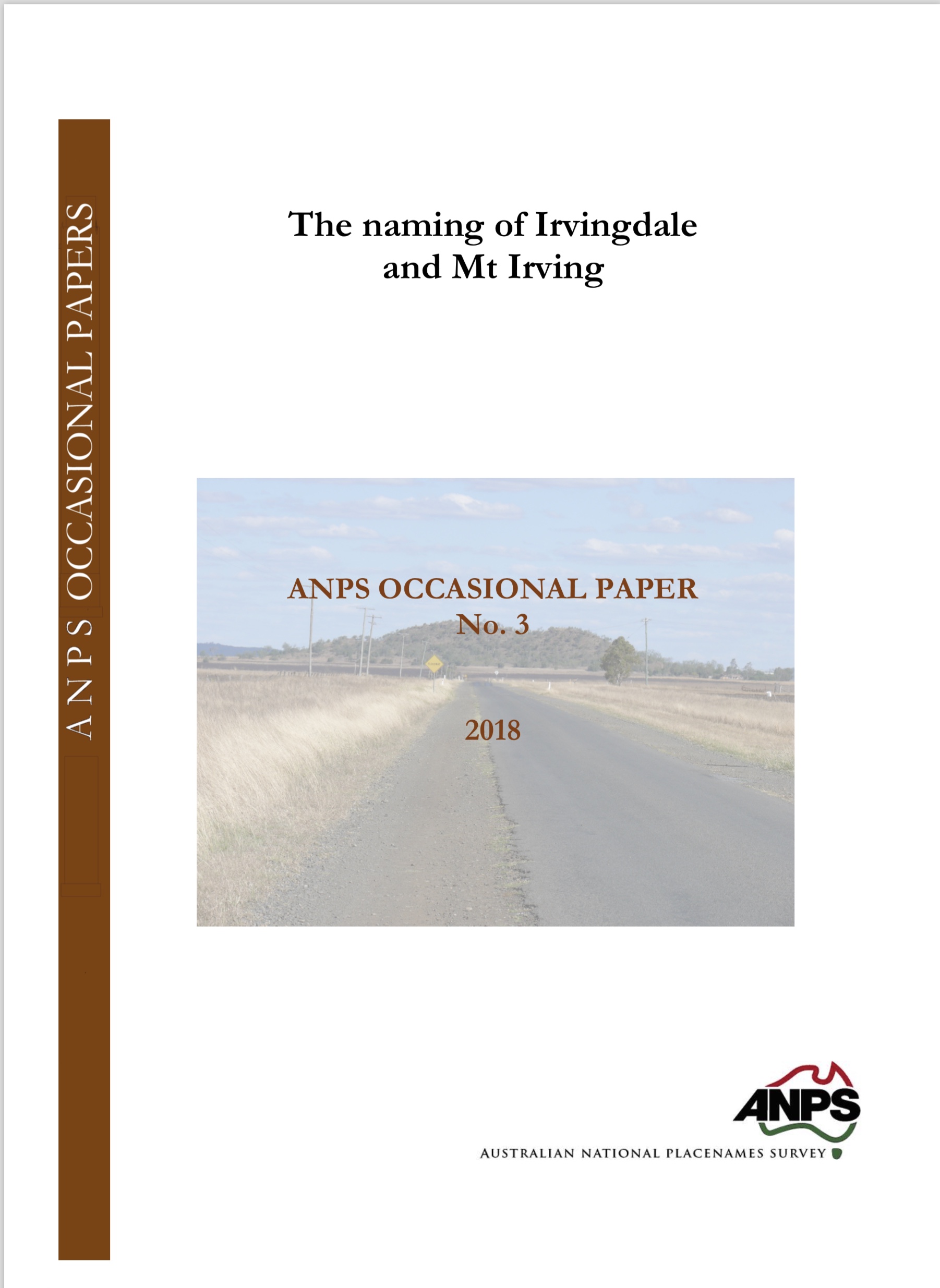 | ANPS Occasional Paper No 3: The naming of Irvingdale and Mt Irving (July 2018), by Diana Beal |
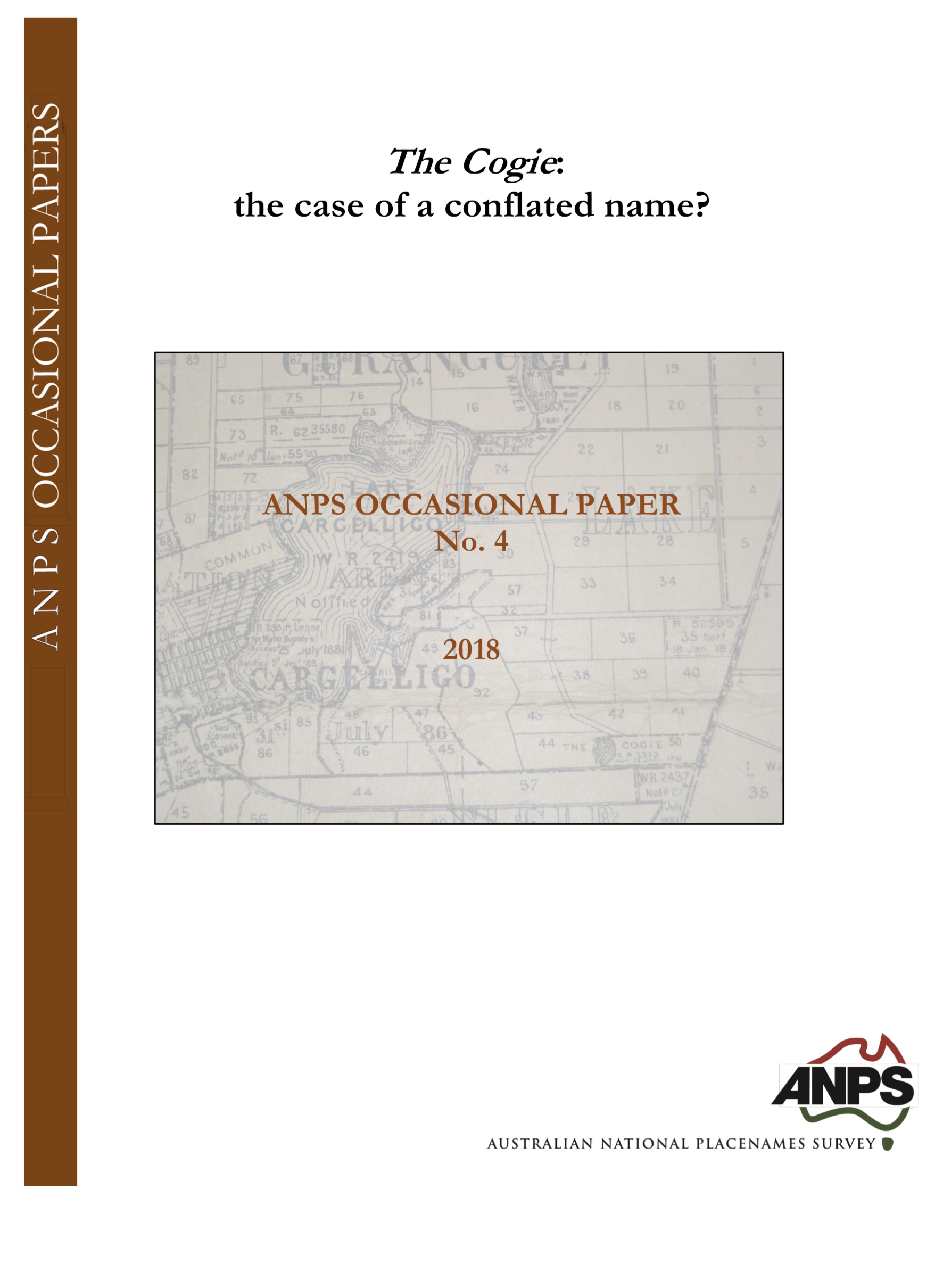 | ANPS Occasional Paper No 4 The Cogie: the case of a conflated name? (September 2018), by Jan Tent |
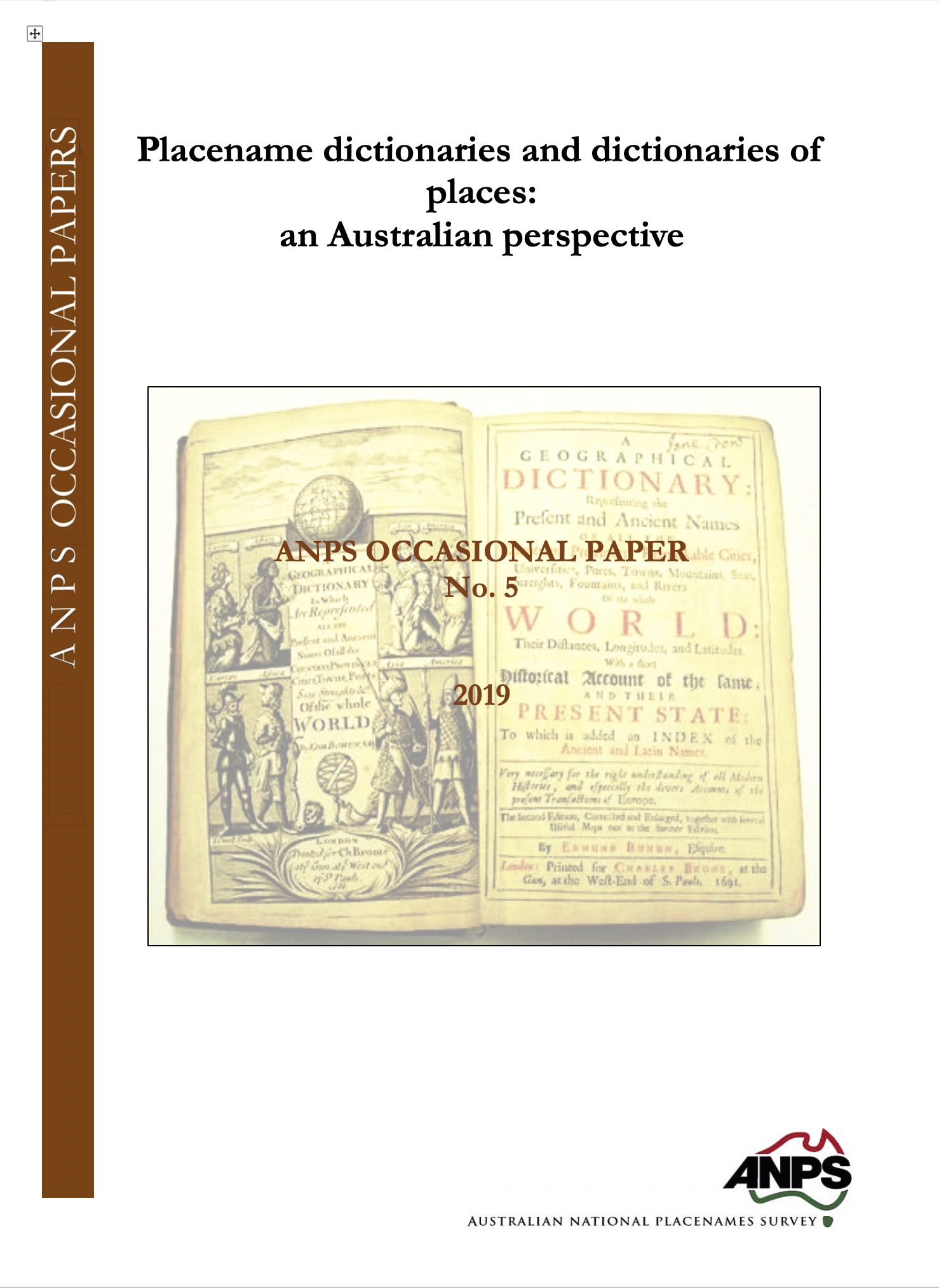 | ANPS Occasional Paper No 5 Placename dictionaries and dictionaries of places: an Australian perspective (January 2019), by Jan Tent |
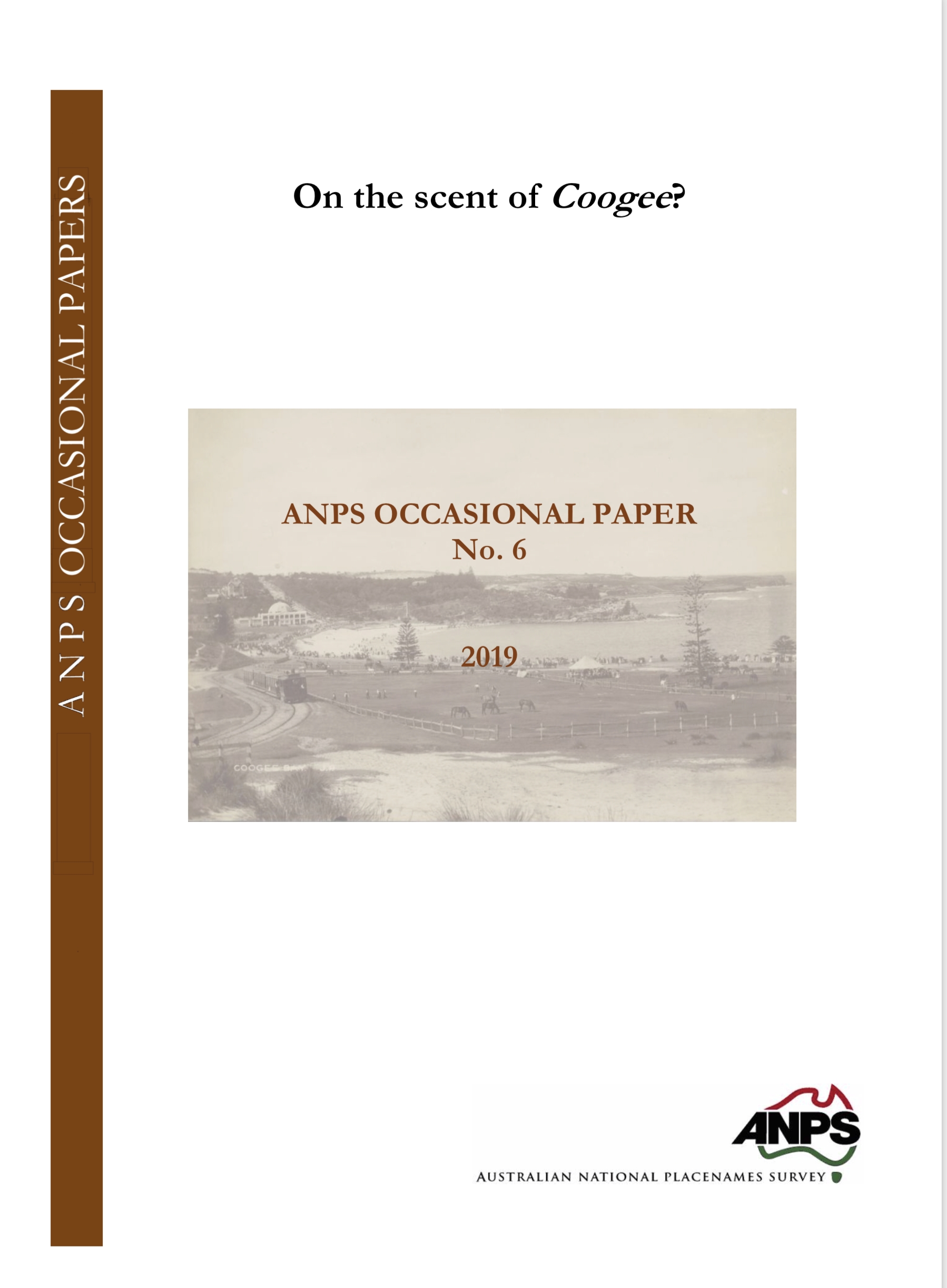 | ANPS Occasional Paper No 6 On the scent of Coogee? (April 2019), by Jan Tent |
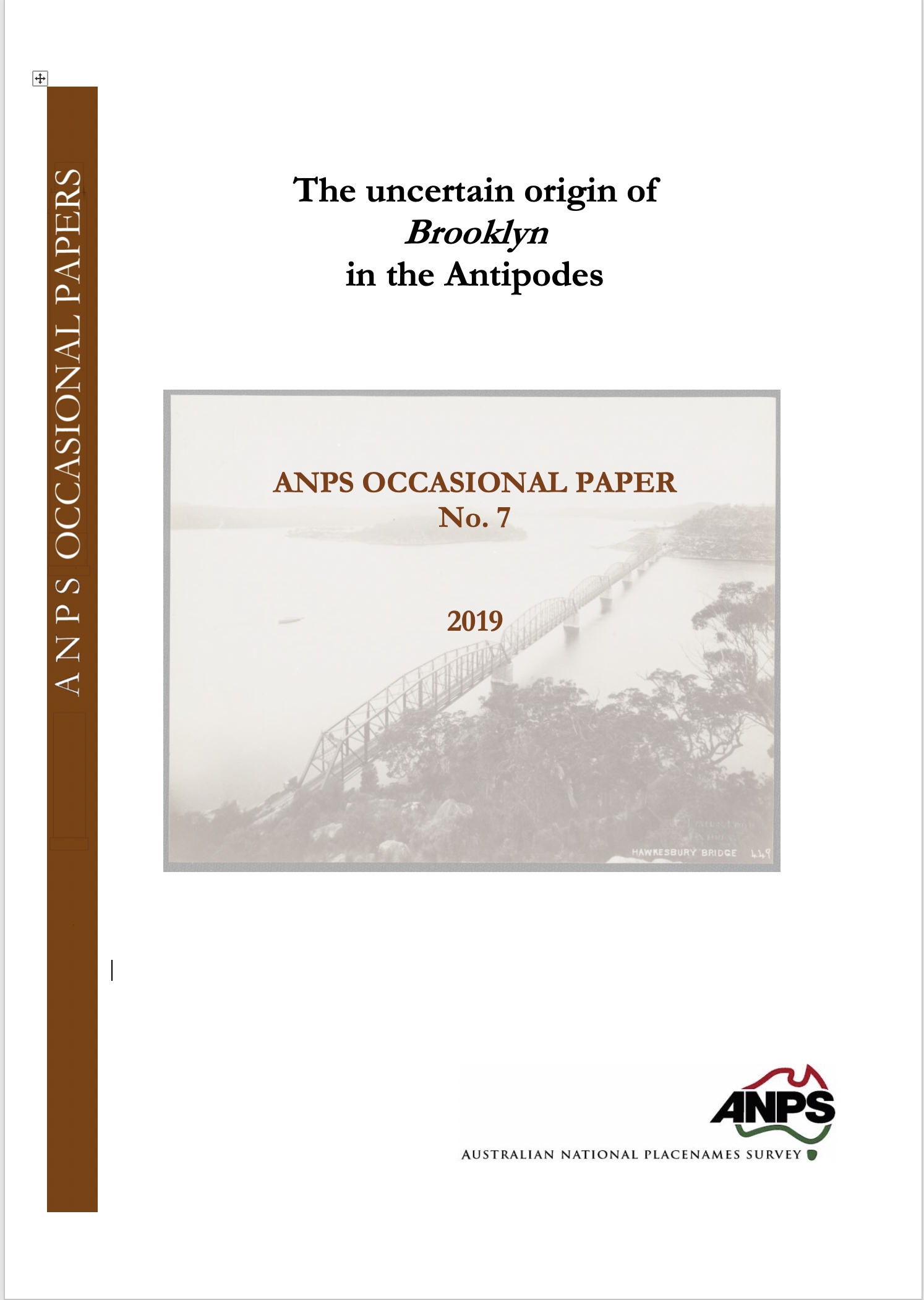 | ANPS Occasional Paper No 7 The uncertain origin of Brooklyn in the Antipodes (September 2019), by Jan Tent |
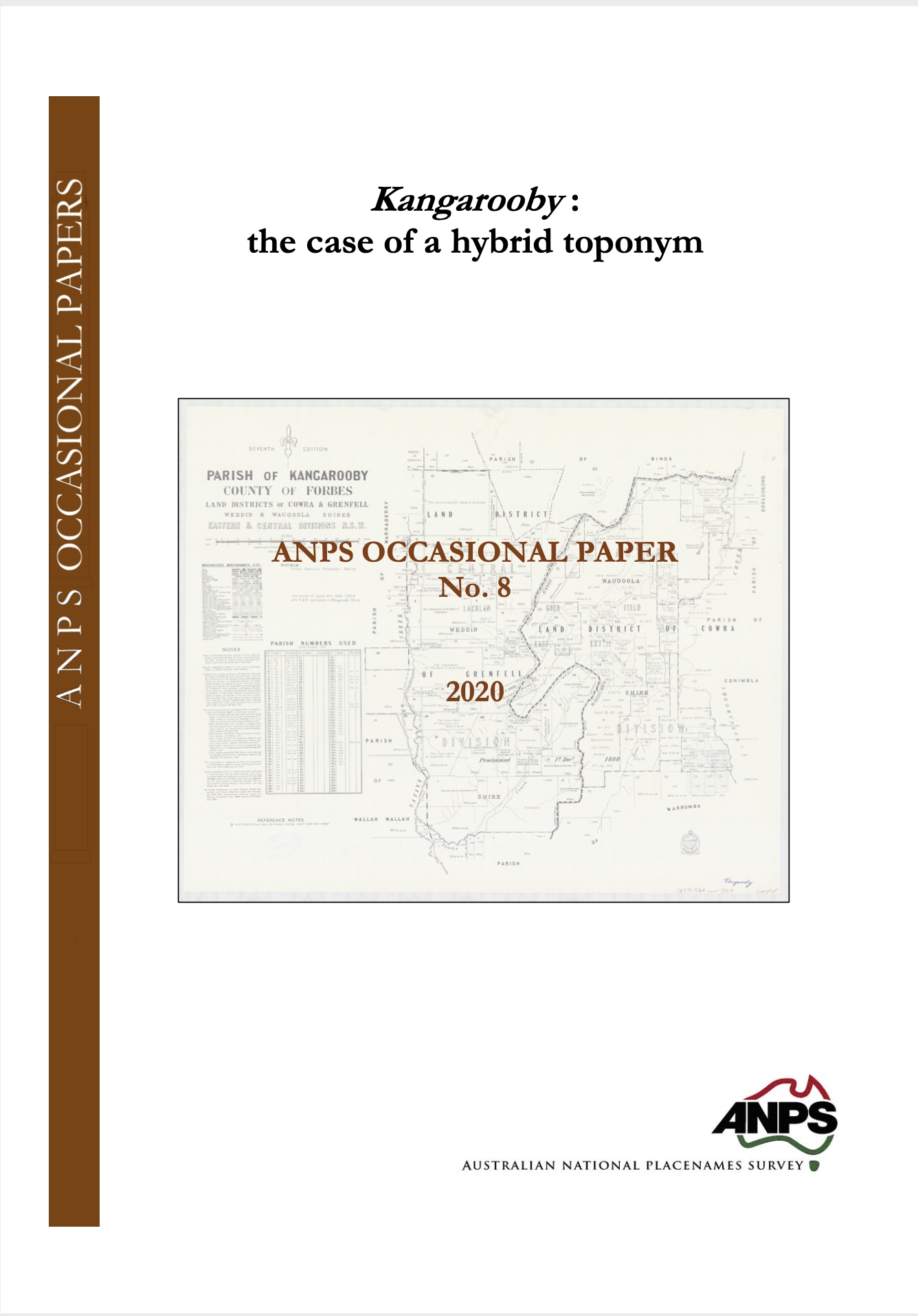 | ANPS Occasional Paper No 8 Kangarooby: the case of a hybrid toponym (March 2020), by Jan Tent |
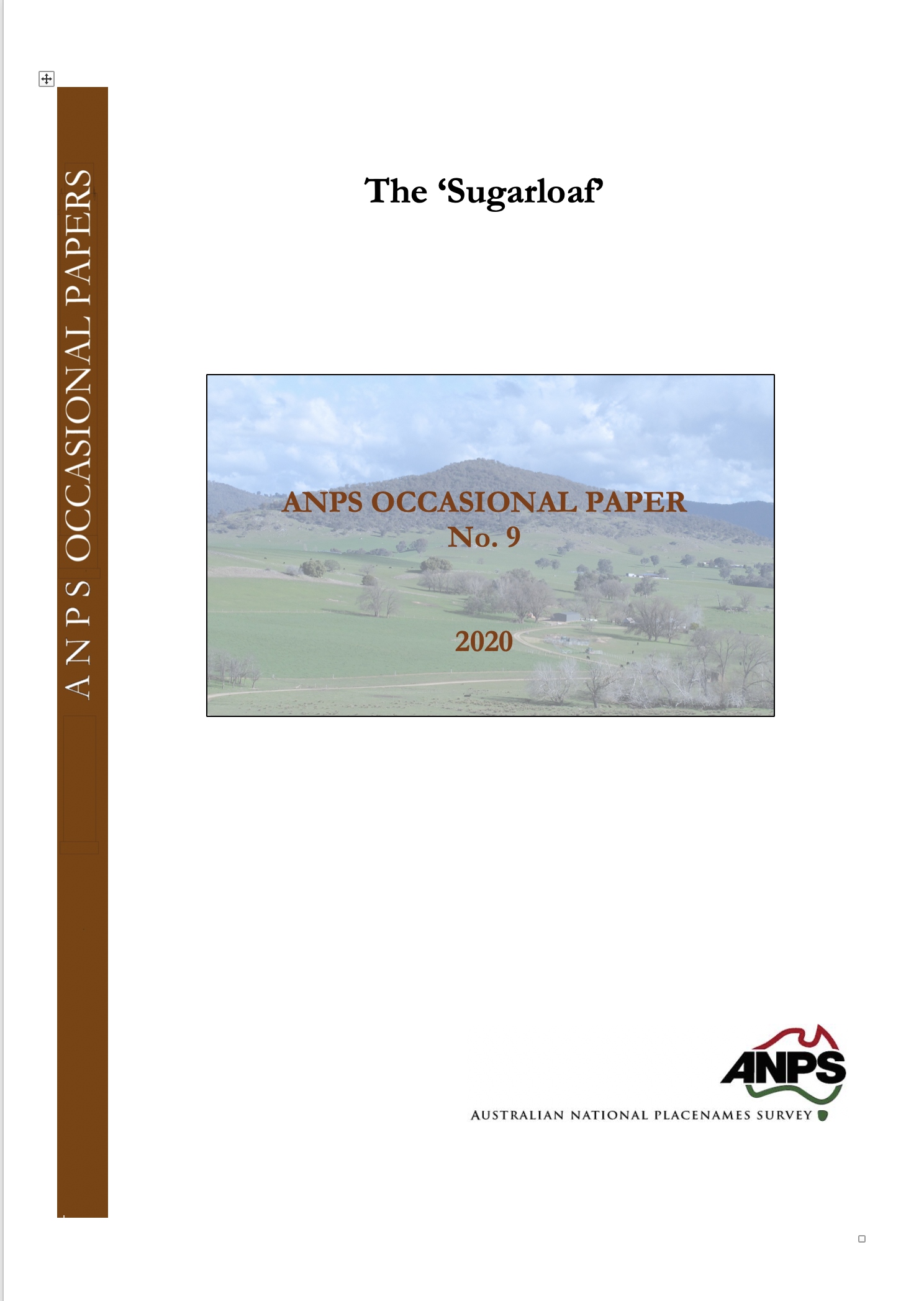 | ANPS Occasional Paper No 9 The 'Sugarloaf' (April 2020), by Jan Tent |
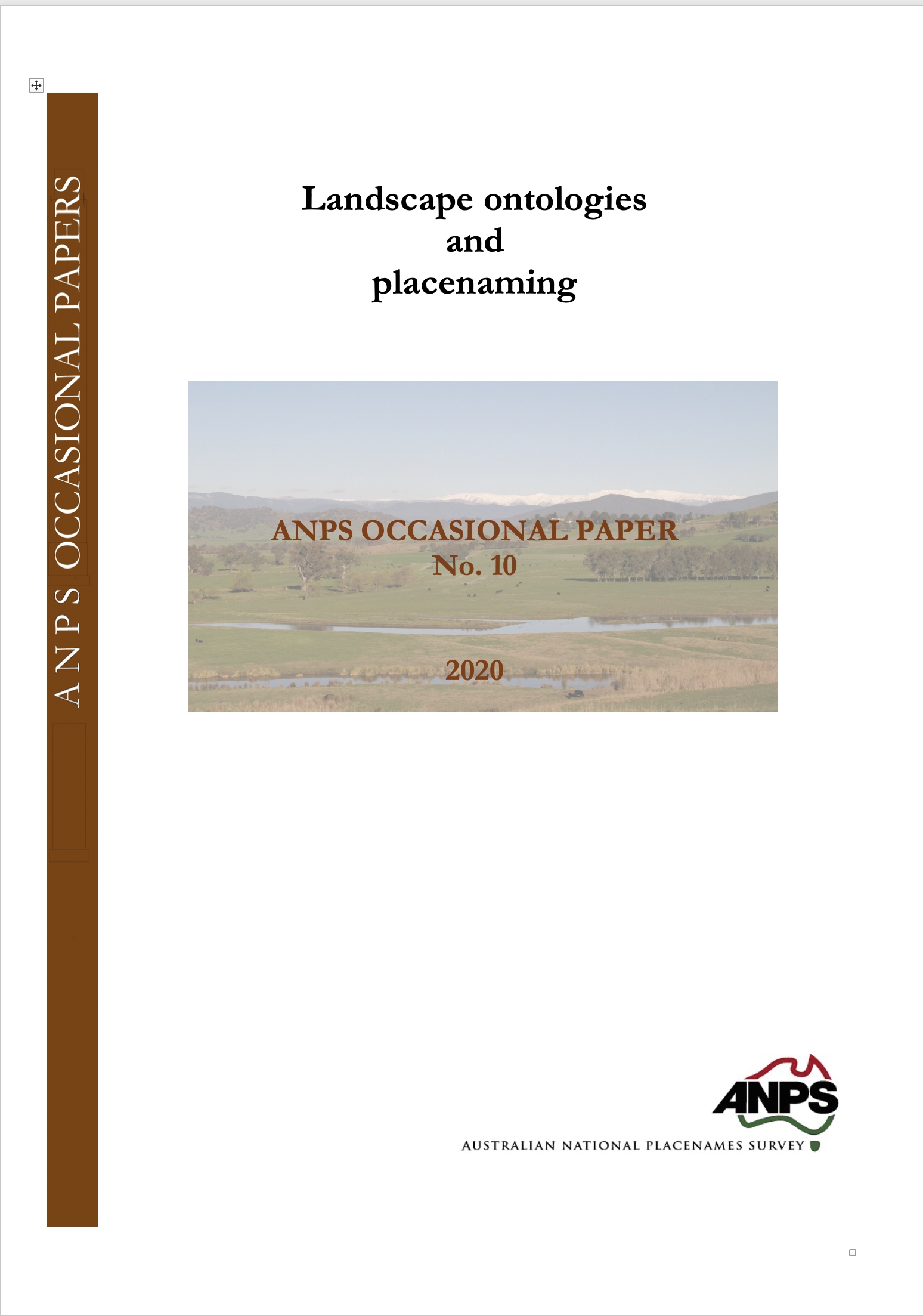 | ANPS Occasional Paper No 10 Landscape ontologies and placenaming (June 2020), by Jan Tent |
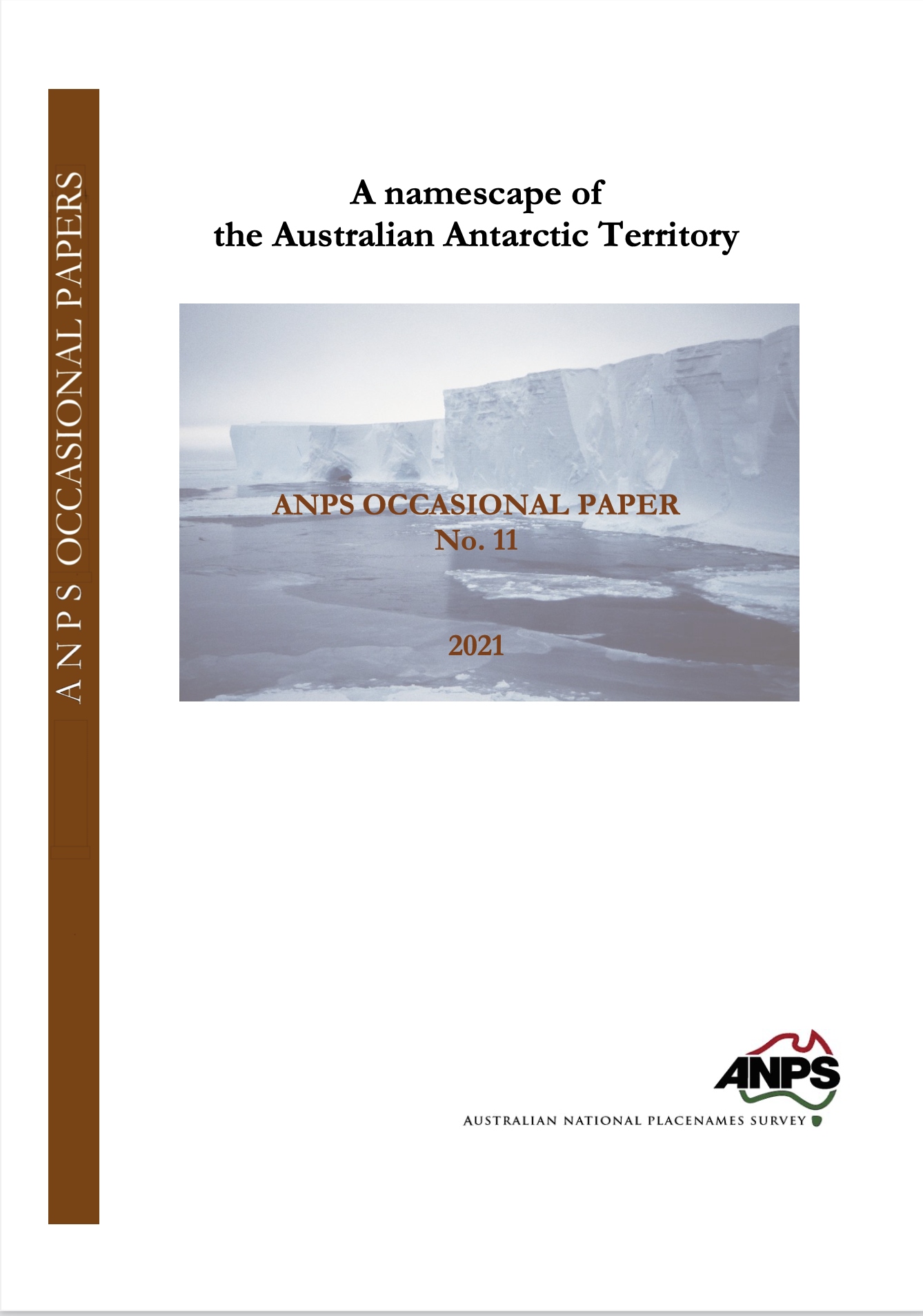 | ANPS Occasional Paper No 11 A namescape of the Australian Antarctic Territory (April 2021), by Jan Tent |
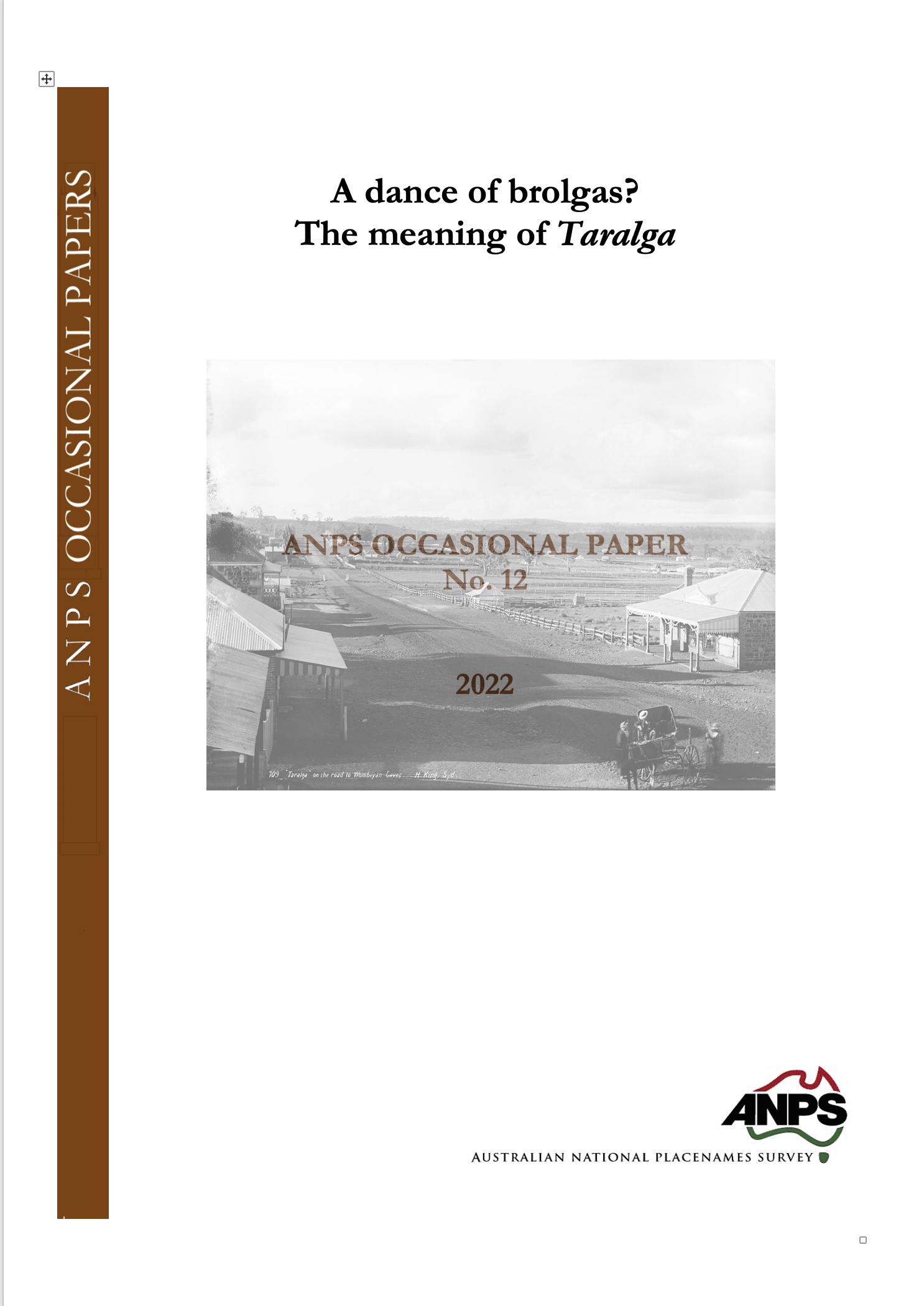 | ANPS Occasional Paper No 12 A dance of brolgas? The meaning of Taralga (March 2022), by Peter McInnes |
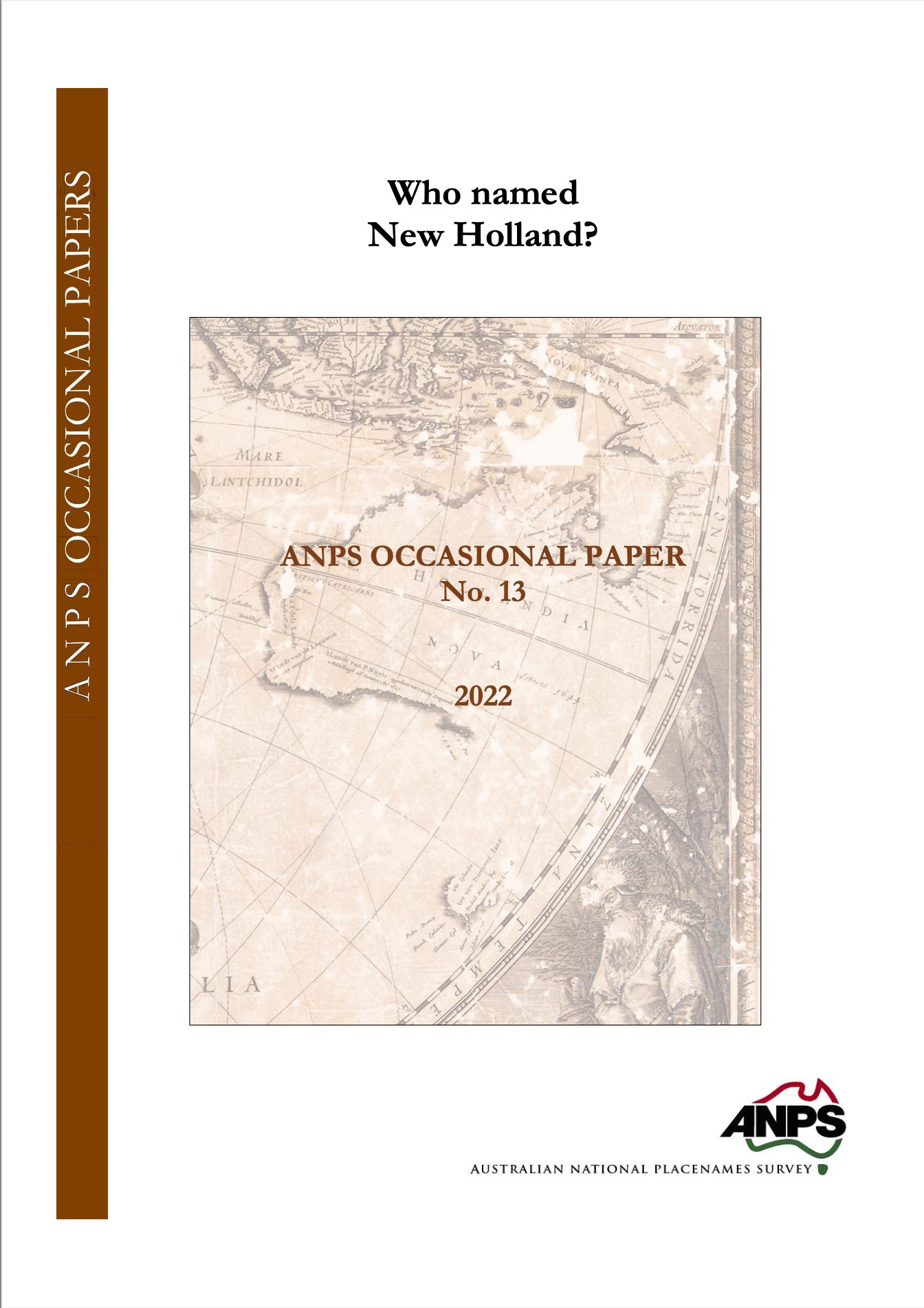 | ANPS Occasional Paper No 13 Who named New Holland? (October 2022), by Jan Tent |
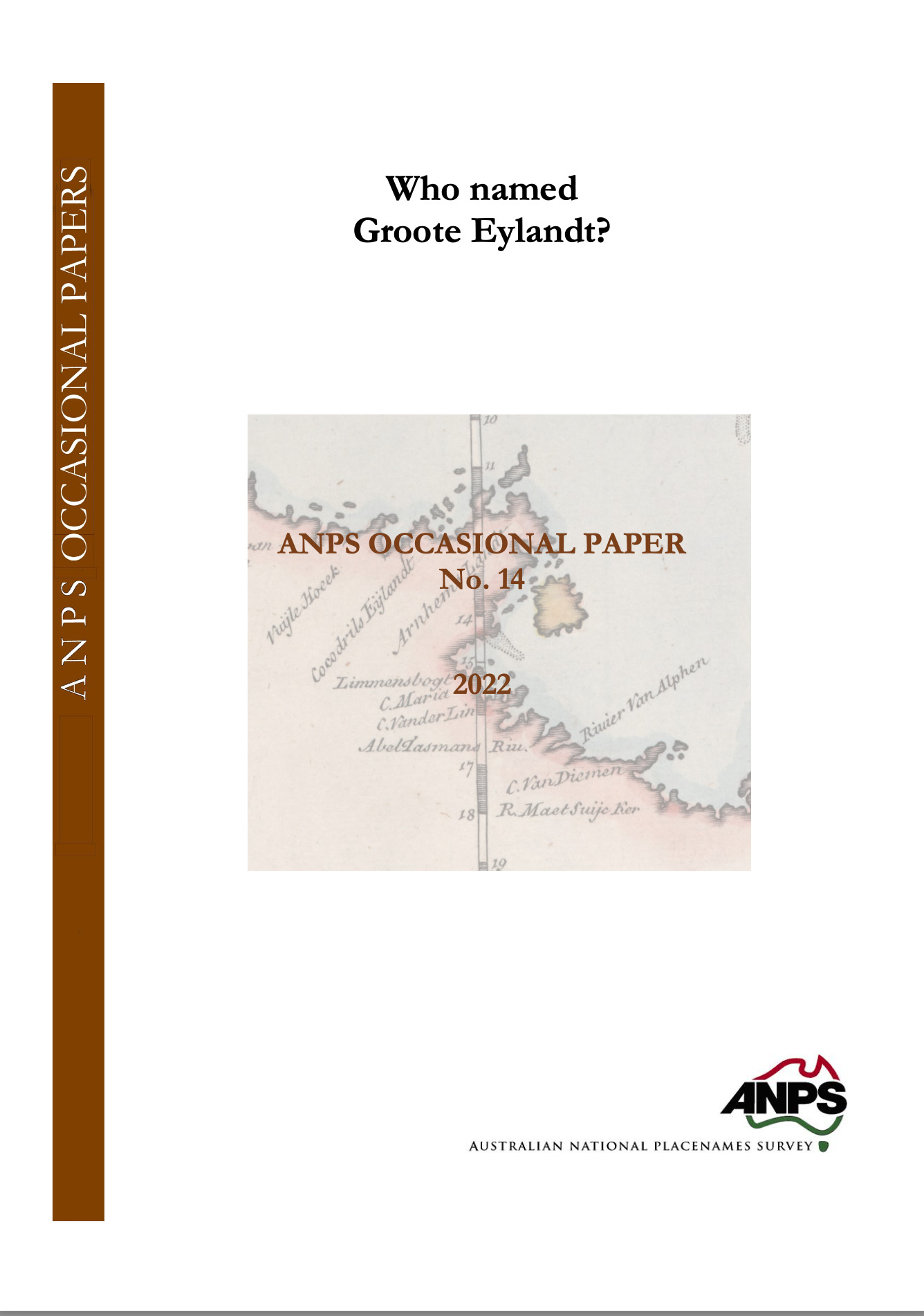 | ANPS Occasional Paper No 14 Who named Groote Eylandt? (November 2022), by Jan Tent |
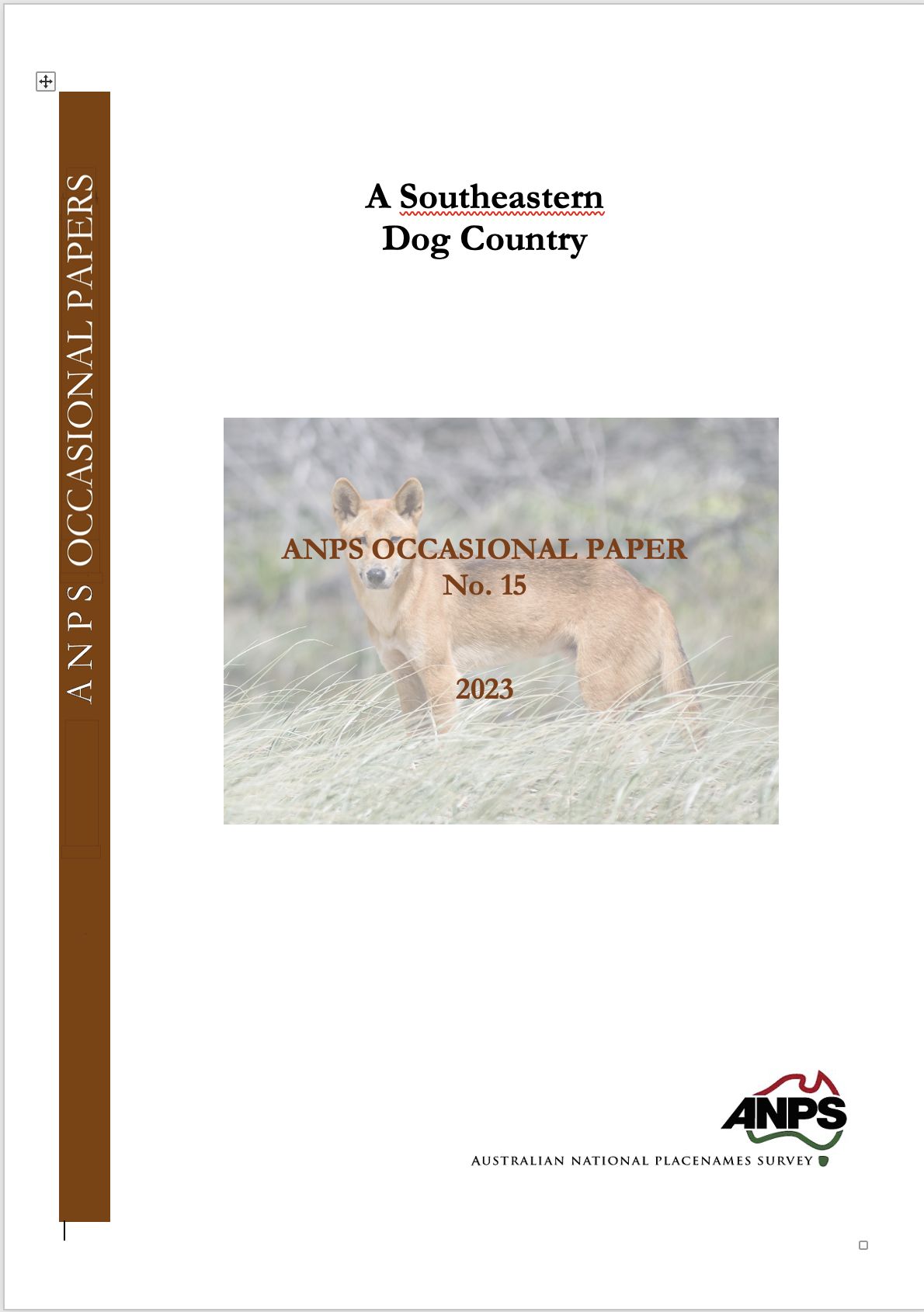 | ANPS Occasional Paper No 15 A southeastern Dog Country (May 2023), by Jim Wafer and Tracey Howie |
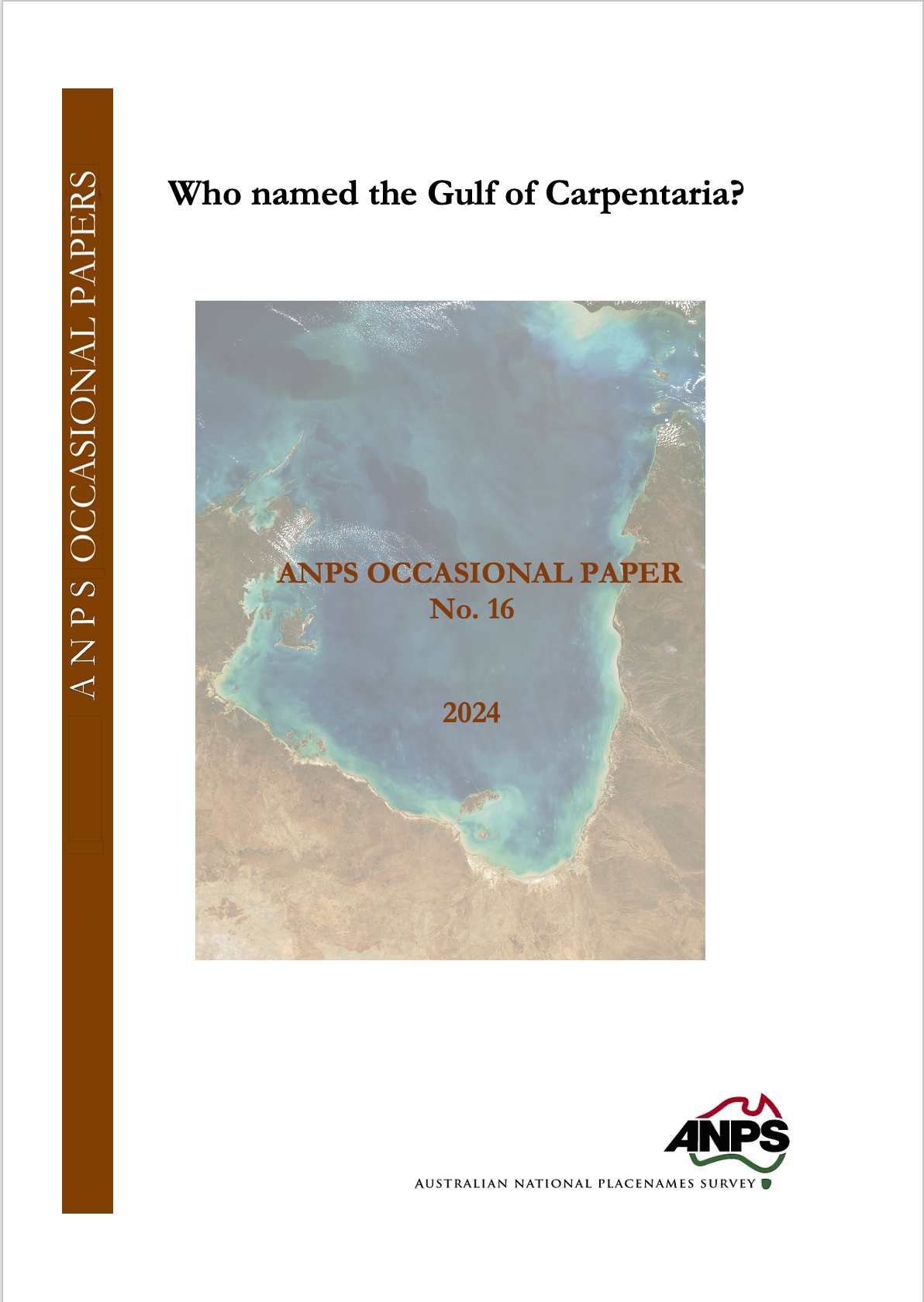 | ANPS Occasional Paper No 16 Who named the Gulf of Carpentaria? (September 2024), by Jan Tent |
 | ANPS Occasional Paper No 17 Australia's toponymic links with the Pacific (June 2025), by Jan Tent |
In preparation:
- 18. Australia's micronation names

